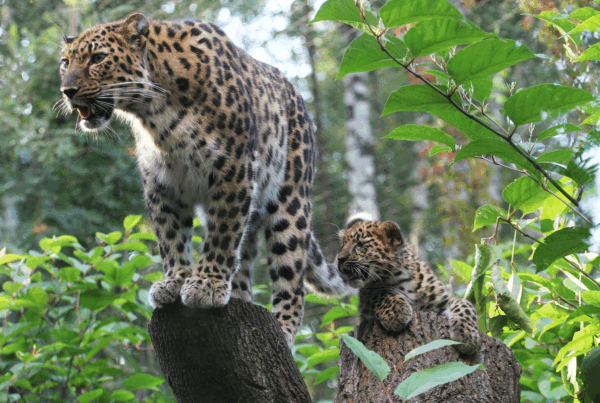The theme for World Wildlife Day 2024 is exploring digital innovation and highlighting how digital conservation technologies and other services can drive wildlife conservation, sustainable and legal wildlife trade, and human-wildlife coexistence in an increasingly connected world.
The technological innovations that have come out of the current global digital revolution have made research, communication, tracking, DNA analysis, and many other aspects of wildlife conservation easier, more efficient, and accurate. It is transforming the way we safeguard our invaluable biodiversity and empowering conservationists across the globe with unprecedented tools to preserve wildlife.
Exploring what digital innovations are currently available on World Wildlife Day 2024
This World Wildlife Day, we will explore the diverse digital tools that enhance the conservation of our precious, remaining, wild big cats.
IoT is the network of physical objects or “things” that are embedded with sensors and other technologies to create a vast network of devices over the internet. IoT has found a purpose in wildlife conservation, transforming the way we monitor, protect, and coexist with the animal kingdom. Through low-cost networked sensors like acoustic monitors and camera traps, IoT facilitates real-time data collection on animal behavior and habitat conditions enabling targeted conservation strategies. Additionally, IoT plays a crucial role in combating poaching by employing connected cameras for surveillance and alert systems to enable rapid responses. It also addresses human-wildlife conflicts by using IoT-powered cameras with AI to detect approaching animals and trigger deterrents, fostering peaceful coexistence. Furthermore, IoT’s geo-fencing technology helps prevent road traffic accidents involving wildlife by creating virtual boundaries and alerting motorists to avoid collision-prone areas.
Networked sensors play a pivotal role in the Internet of Things (IoT), serving as the eyes and ears of this interconnected network. These sensors, embedded with various technologies, continuously collect data from the environment and transmit it, contributing to a vast pool of information. In the realm of conservation, networked sensors have revolutionised wildlife monitoring and protection efforts. Examples include camera traps, which capture images or videos of wildlife in their natural habitats, providing valuable insights into animal behaviour and population dynamics. Another example is acoustic monitoring devices, such as audio moths, which record sounds from the environment, including animal calls or anthropogenic sounds, aiding in species identification and habitat monitoring. By harnessing the data generated by these networked sensors, conservationists can gain a deeper understanding of ecosystems, identify threats to biodiversity, and implement targeted conservation strategies to preserve our planet’s natural heritage.
AI is revolutionizing wildlife conservation efforts by analysing vast amounts of data from low-cost networked sensors like camera traps, drones, and biologging devices. With biodiversity loss accelerating and new technology able to collect vast amounts of information, manual filtering of sensor data is no longer feasible. AI offers real-time outputs for conservationists to respond quickly to threats, although its full implementation is still in development. Deep learning, a form of AI, can identify individual animals like tigers and leopards based on unique patterns, potentially streamlining data processing and enhancing monitoring efforts. Predictive mapping utilises AI algorithms to anticipate threats such as poaching or habitat destruction, allowing proactive conservation measures. Moreover, AI engages citizen scientists through platforms where uploaded wildlife footage is analysed to gather valuable insights into behaviour and habitat preferences. By leveraging AI, conservationists can foster collaboration with local communities and usher in a new era of collective conservation.
Digital divide
The advancement of technologies like the Internet of Things (IoT) and networked sensors holds immense promise for transforming wildlife conservation efforts. These innovations enable the monitoring of animal populations, prevention of poaching, and mitigation of human-wildlife conflicts, paving the way for a more harmonious coexistence between humans and wildlife.
Additionally, Artificial Intelligence (AI) can process the vast amounts of data being gathered by this new technology and facilitate information exchange with local communities living near protected areas, providing early warning systems and fostering collaboration in conservation efforts. However, the digital divide, with an estimated 3.7 billion people lacking internet access, poses a significant challenge, particularly in regions rich in biodiversity but lacking connectivity. To ensure effective conservation, there must be efforts to bridge this gap and achieve digital inclusion by 2030, thereby enabling equal opportunities for leveraging digital technologies in collective conservation endeavors to safeguard the planet’s biodiversity.





